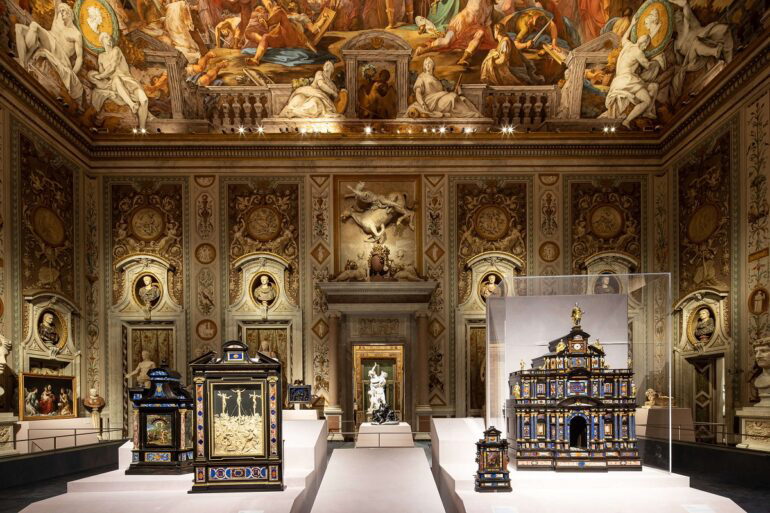An exquisite exhibition in Galleria Borghese
A new thematic path will be on display at Galleria Borghese from 25 October 2022 to 29 January 2023 presenting 60 artefacts from Italian and international art institutions and private galleries. From the Uffizi of Florence to the Los Angeles J. Paul Getty Museum, the stunning collection invites the visitors to reflect on the painting medium as a tool to create immemorable artefacts.
The new exhibition called “A timeless wonder. Painting on stone in Rome in the Cinquecento and Seicento explores several artists’ works through their technique: painting on durable materials such as marble, stale, alabaster and many others supports is seen as a way to achieve eternal glory.
Wondering around the magnificent halls of the Gallery, it becomes evident that past and contemporary painters do aspire to immortality not only through their artistic creations but also through the instruments they choose to use.
The curators, Francesca Cappelletti and Patrizia Cavazzini, organized the artworks in eight sections scattered throughout the gallery, creating a dialogue with other masterpieces of the permanent collection.
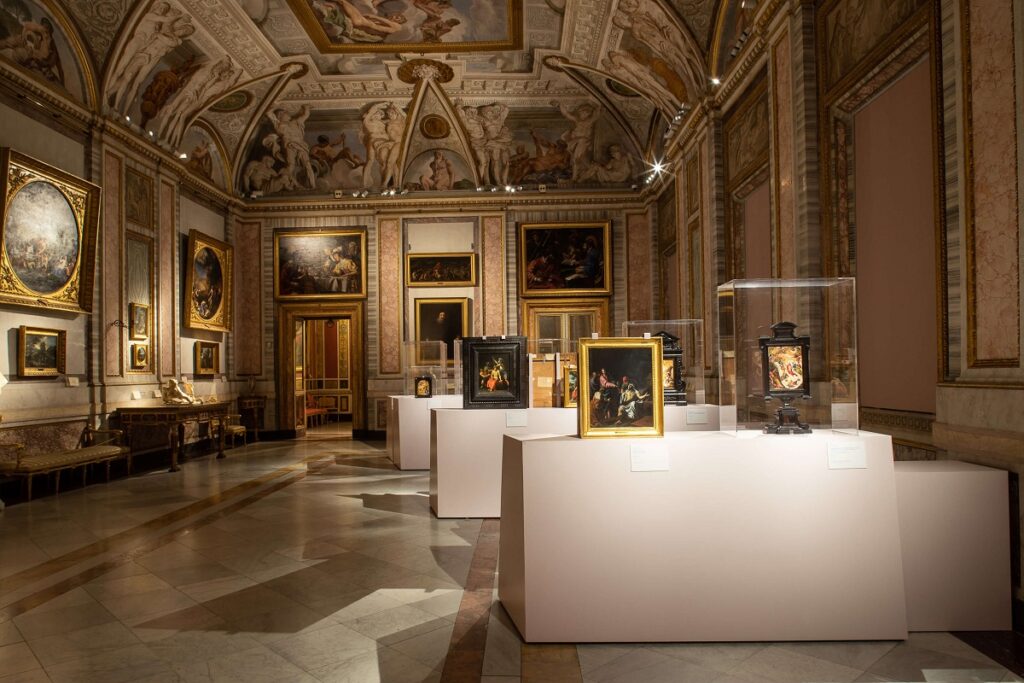
Oil on stone as a way to challenge the art of sculpture
According to the Venetian painter Sebastiano del Piombo, the most effective way to preserve artworks from wear and tear was to paint on robust materials such as stones.
Even before the Sack of Rome in 1527, he developed the oil painting on stone technique and the exhibition at Galleria Borghese aims at showing to the public how this technique was applied through the 16th and the 17th century.
Starting the visit from the first floor of the gallery, we can discover del Piombo’s portraits on slate featuring Cosimo I de’ Medici and two brothers from the Strozzi family. The use of several stones highlights the painted figures and evokes an innovative chromatic effect.
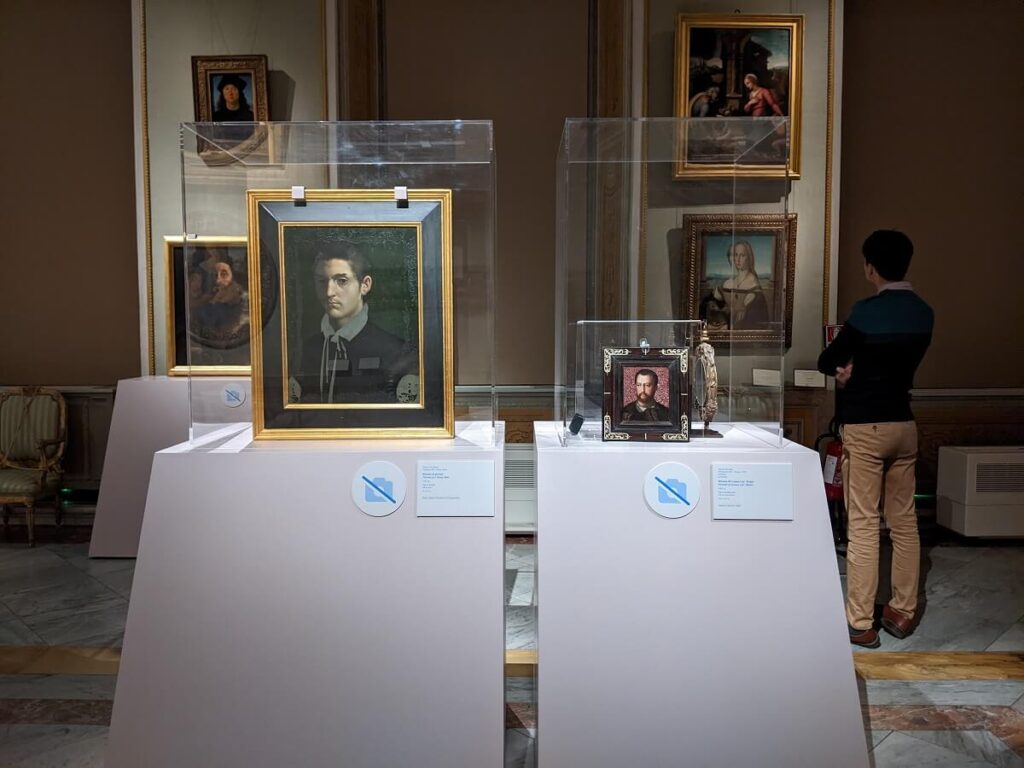
Immortalizing beauty and the use of mythology
As you go along, the beauty and the details of The Martyrdom of St Catherine’s necklace will catch your attention. The decorative jewel on lapis lazuli, from an original by Guido Reni, was one of the many necklace charms much in fashion among Spanish gentlewomen.
It served as a diplomatic gift, promoting the image of the Eternal City to the European courts, but it was also used as a healing charm against fever and pneumonia.
On the same section, two fascinating portraits by Leonardo Grazia da Pistoia (Pistoia 1503 – Naples 1548) are on display. The painter, clearly interested in the subject of mythology and Roman history, pictured with extreme mastery Hebe and Cleopatra as monumental, seductive figures and he utilised wood and slate panels with the intent to make the women immortal, ethereal.
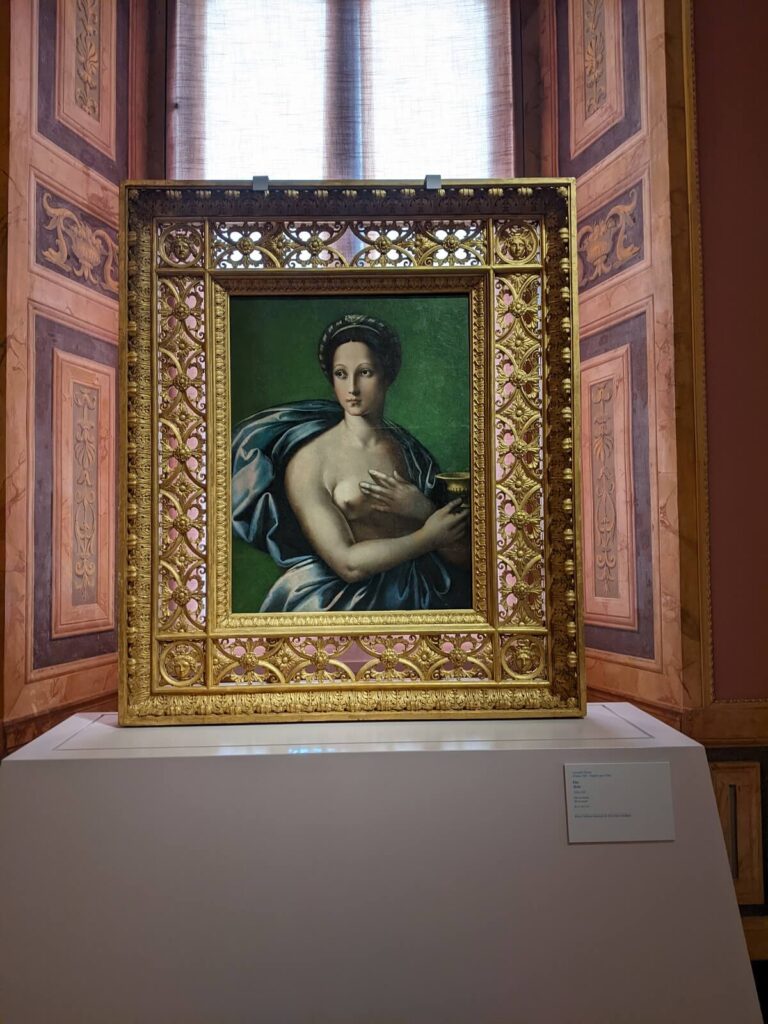
Marble as a colouring tool to express devotion
On the more traditional religious theme, the painters Pasquale Ottino and Alessandro Turchi from Verona used slate polished (and most probably treated) to such a degree that it reflects the viewer, who becomes a participant in the scene represented. The dark background is suited to tragic subjects, and appropriate for their devotional use during the evening prayer. In 1650, the Dead Christ with Magdalen and Angels by Turchi, commissioned by Cardinal Scipione Borghese, was displayed in the Room of Sleep in the villa, together with the Allegory of Sleep in black marble by Alessandro Algardi.
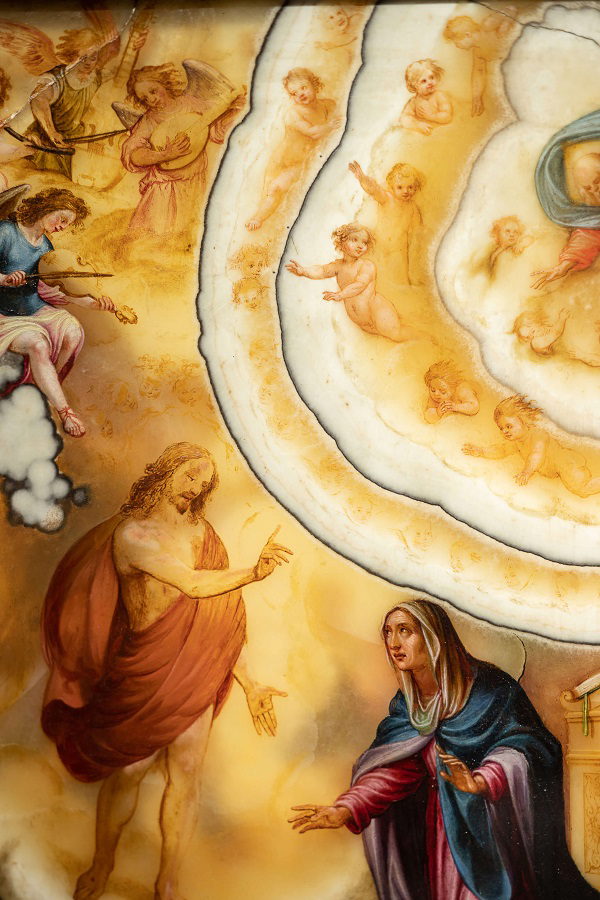
Precious and coloured stones
While slate and wood were generally low-cost materials, lapis lazuli, alabaster and other colourful gems were valuable and pricy, that’s why they were used with parsimony. In this exhibition, it is possible to appreciate some lavish works of art such as the Annunciation by Francesco Allegrini (1587- 1663).
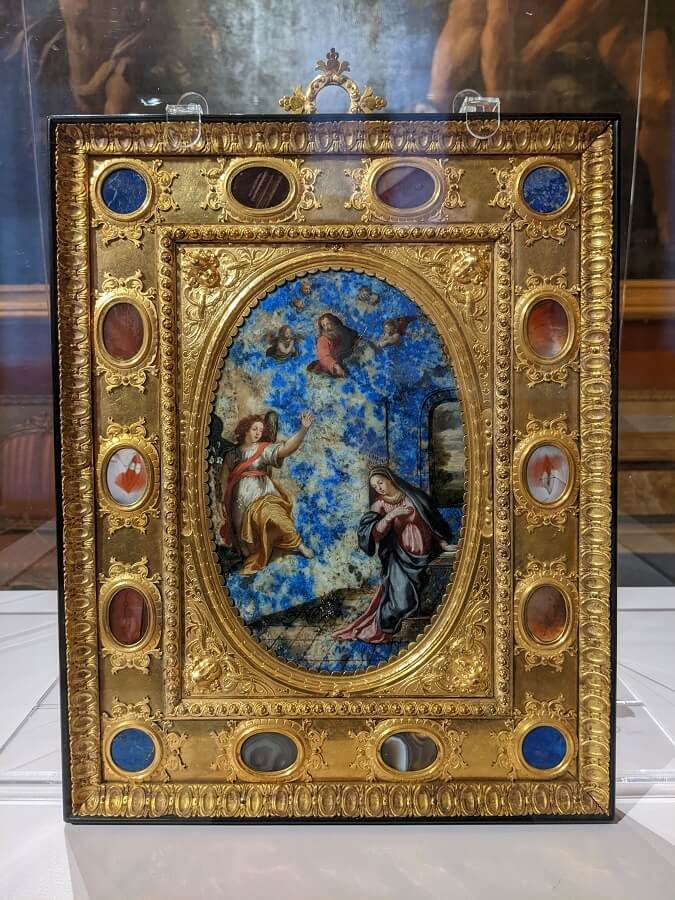
Until January, 29 2023
GALLERIA BORGHESE
Piazzale Scipione Borghese, 5 – Rome
Opening times: Tue-Sun 9am-7pm (Last entry at 5:45pm)
(Closed on Mondays)
Tickets: Full 13 €


